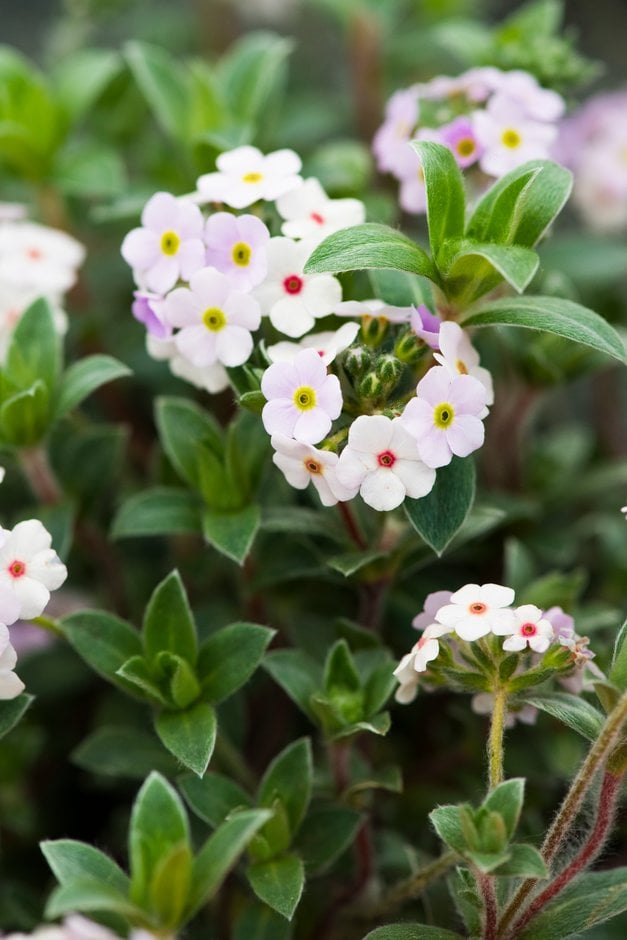Androsace lanuginosa
woolly rock jasmine
A trailing evergreen perennial forming a mat to 45cm wide, composed of loose rosettes of silky, grey-green, ovate leaves. Umbels of bright lilac-pink flowers 8-12mm wide on stalks to 10cm open in mid summer
Size
Ultimate height
Up to 10cmTime to ultimate height
2–5 yearsUltimate spread
0.1–0.5 metresGrowing conditions
Moisture
Well–drainedpH
Acid, Alkaline, NeutralColour & scent
| Stem | Flower | Foliage | Fruit | |
| Spring | Grey Silver | |||
|---|---|---|---|---|
| Summer | Red | Pink | Grey Silver | |
| Autumn | Grey Silver | |||
| Winter | Grey Silver |
Position
- Full sun
Aspect
South–facing or West–facing
Exposure
Exposed or Sheltered Hardiness
H6Botanical details
- Family
- Primulaceae
- Native to GB / Ireland
- No
- Foliage
- Evergreen
- Habit
- Matforming
- Genus
Androsace can be annuals, biennials or evergreen perennials forming mats or compact cushions, with salver-shaped flowers which may be solitary or in umbels
- Name status
Correct
- Plant range
- Himalaya
How to grow
Cultivation
Grow in a scree bed, in vertical crevices in rock or in moist but gritty well-drained soil
Propagation
Propagate by seed sown in containers in an open cold frame as soon as ripe or in autumn. Root single rosettes as cuttings in early to midsummer. Keep moist but water from below to avoid wetting the rosettes
Suggested planting locations and garden types
- Rock garden
- Cottage and informal garden
- Gravel garden
- Patio and container plants
- Banks and slopes
- Ground cover
Pruning
No pruning required
Pests
May be susceptible to aphids under glass but generally pest-free
Diseases
May be susceptible to fungal diseases in damp conditions. Remove dead rosettes to reduce the risk of infection
Get involved
The Royal Horticultural Society is the UK’s leading gardening charity. We aim to enrich everyone’s life through plants, and make the UK a greener and more beautiful place.
